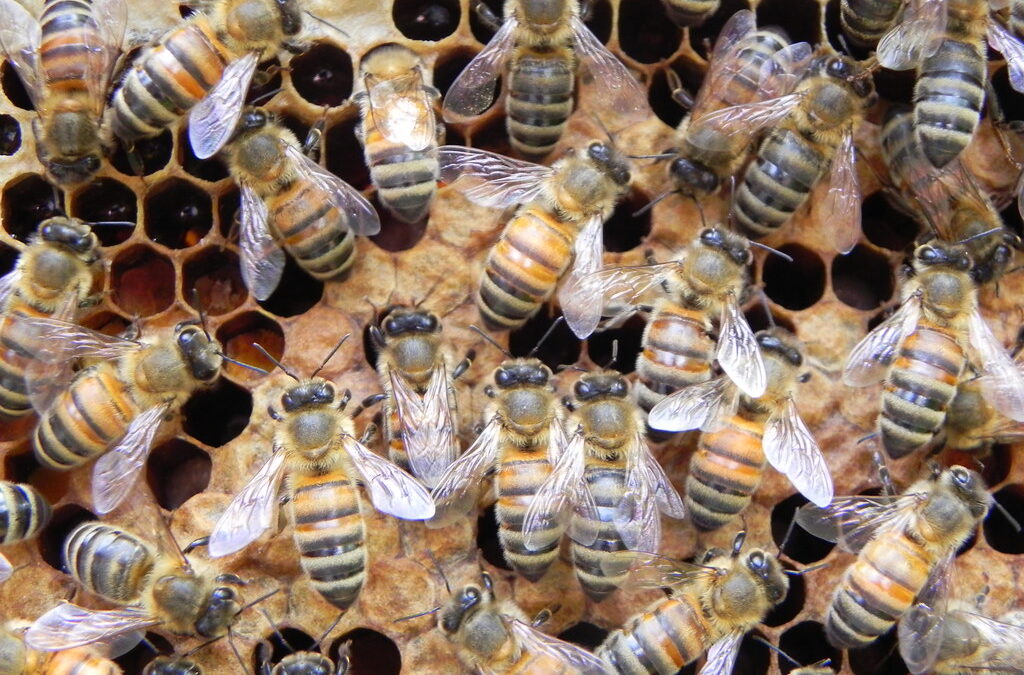By Chelsea Jandreau, Senior Nature Educator and Interim Education Program Coordinator
Winter came in with verve and vigor this year, which is exactly why many plants and animals dedicate so much energy in the fall to the preparation for an unpredictable winter season. Much of this preparation revolves around food. There are plenty of animals that will remain active and continue their search for food through the cold and snow, but many animals are either trying to gather food and store it, or they are trying to consume as much as possible in an effort to hibernate or go dormant for an extended period of time.
I was on the receiving end of a phone call to ACNC about a month ago where the caller was looking for more information about the sudden piles of pine cones on the ground that looked far too intentional to be an accident. In case you are wondering, those are red squirrel middens, where they stockpile and store food for later usage.
Sometime in the last month, Audubon took down the bird feeders in the back yard because a bear had come along to eat the birdseed in an effort to pack on weight for winter dormancy. I have started seeing deer hanging out in the backyard, and while for now they are eating the grass, I wonder how long it will be before they venture up to the replaced bird feeders themselves.
This narrative of fall food collection often lends itself to the concept of survival of the fittest. The ones who get there first or get the most are the ones who are going to survive, and this theory does not just apply to fall and winter food availability. It can be, and often is, demonstrated throughout the year, whether with food, shelter, locations to raise young, and other factors. However, it’s not always every organism for themselves out there. There are plenty of examples in nature of cooperation and care for others in a family unit or larger community.
From primates to prairie dogs, there are species that survive, and more than that, thrive in communities. For many of these animals, it comes down to the idea that there is safety in numbers, but it can be difficult for scientists and researchers to pinpoint exactly how much more is involved in the evolution of communal living and care.
Some species live in large, extended groups. Honeybees, ants, and termites live in colonies, and individuals have specialized jobs to help keep the group as a whole alive and fed. Young are indirectly cared for as the adults collect food for them to consume after they hatch, and if you have ever flipped a stone or log over disturbing an ant colony, you may have seen them picking up the young and carrying them away.
Mammals, with their tendency to have more immature young at birth, are a frequent example of parental care, and occasionally larger family-based care of their young.

Black bears actually give birth in the late winter. The cubs are fairly helpless at first, but they will remain in the den with their mother until spring, when they will be capable of following mom around as she leads them to food. The cubs will stay with mom for the first year and a half or so of their life, before moving out on their own. During this time, they will play together, groom each other, and the cubs are reliant on mom for their safety.
Wolves come to mind for most people when they think about animals that live in packs, but our local coyotes can also be found in family groups. Often, these groups are fairly small, consisting of the parents, their most recent litter, and potentially a few other adults from a previous litter. How long they stay together and how many family members stick around depends heavily on the amount of food available. When food is abundant in a certain area it will be able to support more coyotes, but when food begins to dwindle, adults will split off and find new areas to hunt. Like the black bears, the young are initially reliant on their parents for food, shelter, and protection. As they grow, they will learn to find these things on their own.

For birds, their parental care duties are much shorter, but for anyone who has been confronted by a goose pair accompanied by their fluffy, yellow young, you are aware that they are just as protective when faced with a threat.
How much of this is an evolutionary tactic to pass on their genetics, and what part is genuine concern or care for another member of their species is tough to discern. We can observe, but we can’t directly ask any of them why they do what they do. Either way, remember that even in some of the harshest weather and under the ever-changing environmental landscape, it is not just an “every organism for themselves” world out there. There are plenty of examples of community and care that exist in nature. This tactic exists across orders and biomes around the world, and these groups, packs, communities, and colonies support the survival and health of these organisms spanning generations.
Audubon Community Nature Center builds and nurtures connections between people and nature. ACNC is located just east of Route 62 between Warren and Jamestown. The trails are open from dawn to dusk and birds of prey can be viewed anytime the trails are open. The Nature Center is open from 10:00 a.m. until 4:30 p.m. daily except Sunday when it opens at 1:00 p.m. More information can be found online at auduboncnc.org or by calling (716) 569-2345.


Recent Comments